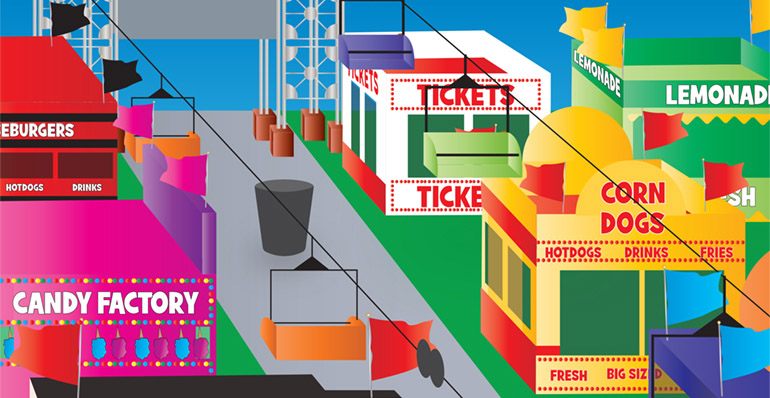A history of the Western Fair and what’s on this year

The Western Fair is an annual event held in September at London’s Western Fair District. It has always been London’s biggest community event. This year’s fair is the first in two years, and will run from Sept. 9-18. The 2022 Western Fair is expected to bring all the fun of rides, shopping, animal farms, and the familiar midway, along with bandstand performances from Val1ey with New Friends and Lilyisthatyou, as well as Finger Eleven with I Mother Earth and Full Throttle.
Its history began when the Western Fair Association was founded through combining the East Middlesex Agricultural Society and the London District Horticultural and Agricultural Society. Historically, the association was formed completely by volunteer membership, which elects a board to oversee fiduciary duties. The inaugural Western Fair was held on Sept. 29 and 30 of 1868, featuring primarily livestock shows.
The area was north of what we now know as Victoria Park in downtown London.
Shortly after, the fair was moved to the Old East Neighbourhood Village after gaining legal status through the Provincial Charter and Act of Incorporation to an area called Salter’s Grove, now called Queen’s Park. A beautiful new Crystal Palace exhibition pavilion was built on the new location by 1887.
By 1898, the Western Fair became a 10-day long event, as it is today, adding industrial and art exhibitions which quickly became mainstay exhibits at the fair. An attendee could partake in agricultural industry competitions related to livestock, crops, fruit, and flowers, as well as competitions in fine arts and household sciences to win prize money, ribbons, and rosettes.
Horse competitions were huge in those days as horses were important for both farming and transportation. Categories for competitions in horse races included light standardbred and thoroughbred, harness and roadster classes, plus carriage and coach ponies and heavy horses.
Equipment displays like the tractor exhibit in 1918 advanced the agricultural business at the time and were run similarly to farm shows today. People from around the world would attend to see and discuss the latest innovations and trends in the industry.
The Fair earned a reputation as an event that everyone in London attended as it was the premier place to see things and be seen.
In 1915, the grandstand seating area that oversaw the racing track hosted entertainment spectacles such as horse racing, horse shows, cattle competitions, military displays and bicycle shows was rebuilt out of steel due to a fire that burned the old wooden building down on Christmas Day the previous year. It was built smaller than the old wooden grandstand but still remains in the same place it operates today.
“The fair has always been a place of fun and adventure for people of all ages…”
The middle of the racetrack was often used as a parking lot for attendees once cars became popular.
In 1923, the Manufacturer’s building was built and in January of 1927, the main exhibition building, the Crystal Palace, burnt down in a fire and was lost.
To replace the main exhibition building a new building was constructed, named the Confederation Building to commemorate the 50th anniversary of Canadian Confederation, and was made ready for the 1927 Western Fair in September of that year. The new building hosted many agricultural, culinary, and arts competitions as well as store displays and local vendors.
Today the Confederation Building is called The Market at the Western Fair District and hosts amazing local food vendors and artisans.
A year later, the Western Fair Arts Building was constructed as a fine art gallery used for the fair and other times during the year. When it was completed in 1928, it was one of the first art exhibit buildings in existence in Canada.
When World War II began many fairground buildings and tents were torn down and rebuilt as military training camps. The Western Fair was cancelled in those years in light of the war effort.
The 2020 Western Fair was the first fair cancelled since the war.
After the war, the Western Fair Association took back control of the fairgrounds and a big fair was planned for 1948. By 1950, the fair regained its momentum and lasted for six days that year.
The fair has always been a place of fun and adventure for people of all ages, so rides and attractions have been built over the years for entertainment. These rides were often operated by independent midway operators.
By the 1960s, the Western Fair began its own midway operation.
Unfortunately, the Manufacturer’s building burnt down during this period in 1963, during the annual Poultry Conference and Exhibition. A new building called the Progress Building was constructed in its place in 11 weeks for that year’s fair.
In 1966, a connection was built between the Progress Building and the grandstand making it the first connection between large buildings on the fairground and an area dedicated to specialty food concessions. It became known as Patio Cafe. Food concession vendors often run these booths to raise money for their community organizations.
Then in 1976, the Zyklon roller coaster was purchased by the fair and was the most popular ride for years. Now the Crazy Mouse roller coaster resides in its place and it is still one of the most beloved fairground rides to this day.
Ushering in the modern age, the 1989 fair introduced a new concept for their display called, “Livestock 2000” which emphasized agricultural awareness programs, instead of livestock competitions. They now run this every year.
Today the fair is run by dedicated staff who work with the board and volunteer membership every year with many of the component events it has developed over the years. You can find out more about what’s happening at this year’s Western Fair at westernfair.ca.

